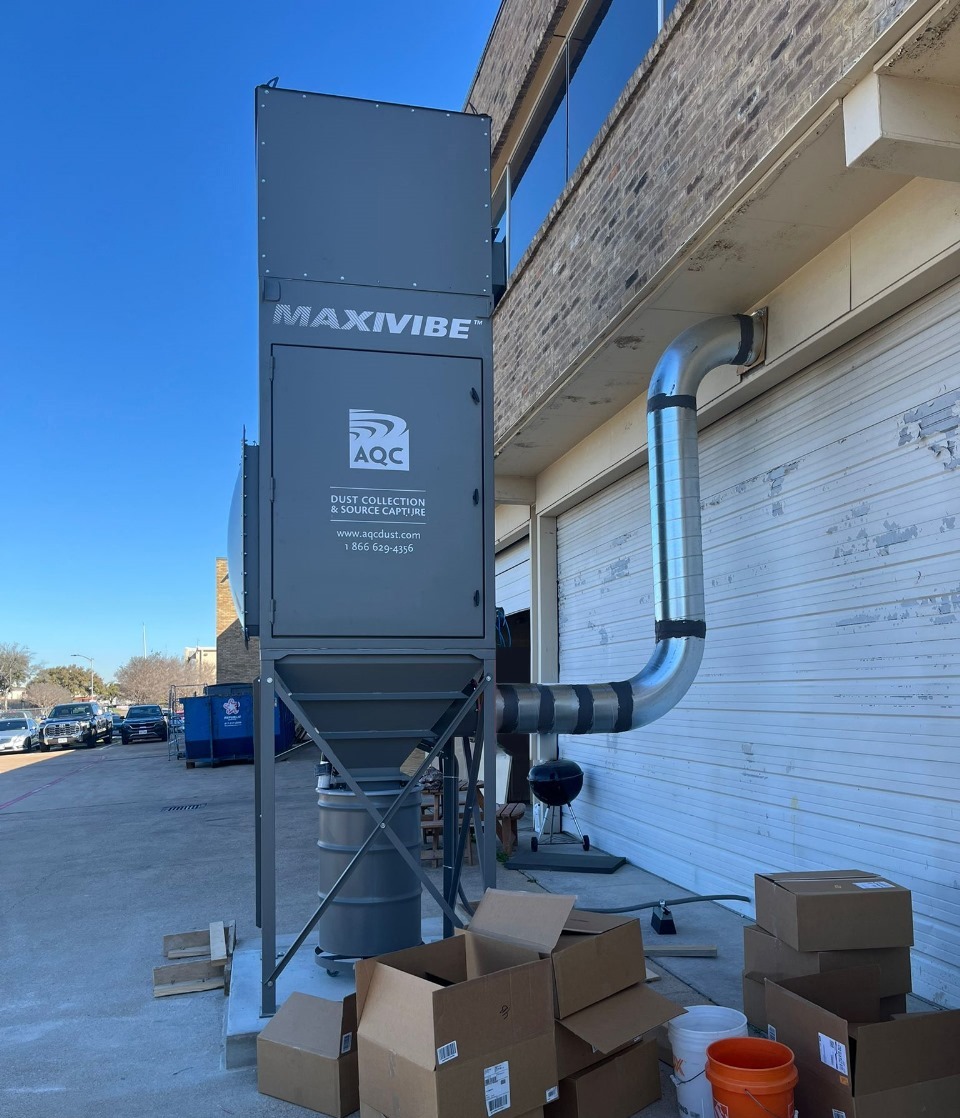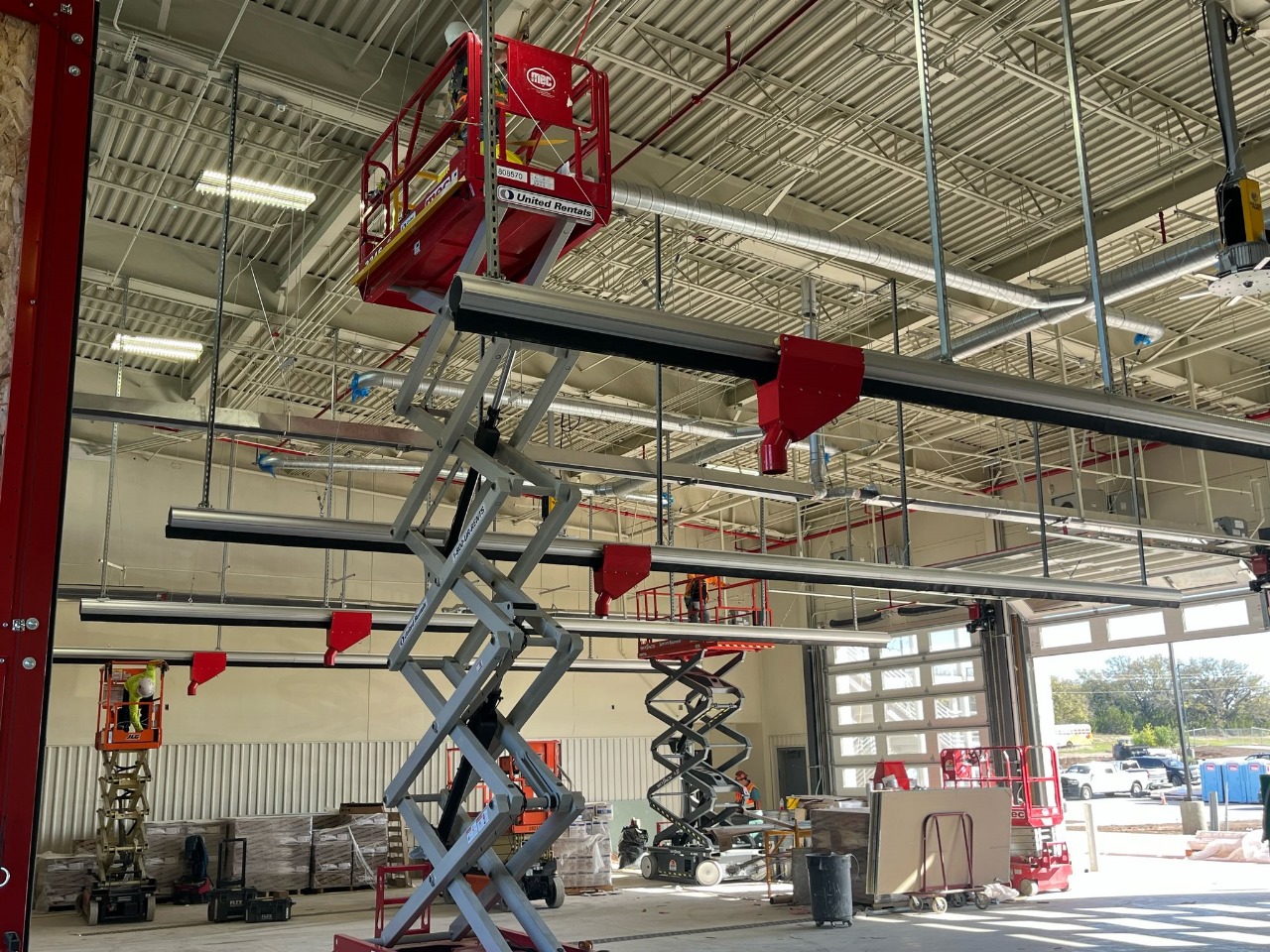The Challenge: Protecting Firefighter Health
 The Killeen Fire Department, serving the growing community of Killeen, Texas, recently undertook a significant upgrade to its facilities, prioritizing the long-term health and safety of its personnel. With the construction of a new active response unit and the expansion of its training facility, the department faced the critical decision of implementing state-of-the-art vehicle exhaust extraction systems to mitigate the well-documented health risks associated with diesel exhaust exposure.
The Killeen Fire Department, serving the growing community of Killeen, Texas, recently undertook a significant upgrade to its facilities, prioritizing the long-term health and safety of its personnel. With the construction of a new active response unit and the expansion of its training facility, the department faced the critical decision of implementing state-of-the-art vehicle exhaust extraction systems to mitigate the well-documented health risks associated with diesel exhaust exposure.
Firefighters are routinely exposed to hazardous substances, with diesel exhaust emissions being a primary concern within fire stations. These emissions contain particulate matter, nitrogen oxides, carbon monoxide, and various carcinogens, which can lead to a range of health issues, including respiratory diseases, cardiovascular problems, and an increased risk of certain cancers.
The National Institute for Occupational Safety and Health (NIOSH) and the International Agency for Research on Cancer (IARC) have classified diesel exhaust as a known human carcinogen.
The Solution: FIRERAIL Vehicle Exhaust Extraction System
 The Killeen Fire Department recognized that traditional ventilation methods were often insufficient to fully capture these harmful emissions, especially during vehicle startup and idling within the apparatus bays. For the new active response unit, ensuring immediate and complete capture of exhaust was paramount for daily operations.
The Killeen Fire Department recognized that traditional ventilation methods were often insufficient to fully capture these harmful emissions, especially during vehicle startup and idling within the apparatus bays. For the new active response unit, ensuring immediate and complete capture of exhaust was paramount for daily operations.
Simultaneously, the training facility, where vehicles might be run for extended periods during drills and maintenance, presented a unique challenge requiring robust and reliable extraction to protect both instructors and trainees.
After thorough research and evaluation of various systems, the Killeen Fire Department chose the FIRERAIL vehicle exhaust extraction rail system for installation in both their newly constructed active response unit and their expanded training facility.
This decision was driven by FIRERAIL’s reputation for efficiency, reliability, and its advanced rail-based design, which offers comprehensive coverage across multiple bay doors and vehicle positions.
The FIRERAIL system operates by attaching directly to the vehicle’s exhaust pipe as it enters the bay, then moving along a rail as the vehicle pulls out. This design ensures that exhaust fumes are captured at the source and extracted outside the building, preventing their dispersion into the station’s interior environment. Key features that influenced Killeen’s decision included:
Implementation and Integration
Source Capture Efficiency: The direct connection and rail movement ensure nearly 100% capture of exhaust gases from the moment the engine starts until the vehicle exits the bay.
Compliance with Standards: The system helps fire departments meet stringent air quality standards set by organizations like the National Fire Protection Association (NFPA 1500) and OSHA, which emphasize the need for effective exhaust control.
Ease of Use and Automation: FIRERAIL systems are designed for quick and easy connection, often featuring automatic disengagement as the vehicle exits, minimizing operational delays during emergency responses.
Durability and Low Maintenance: Constructed with robust materials, the systems are built to withstand the demanding environment of a fire station, ensuring long-term performance with minimal upkeep.
The installation process was meticulously planned to integrate seamlessly with the architectural design of the new active response unit and the existing infrastructure of the training facility. In the active response unit, the FIRERAIL system was installed across multiple bays, allowing for simultaneous extraction from various apparatus, including engines, ladders, and rescue vehicles.
The rail design provided the flexibility needed for different vehicle lengths and parking configurations.
Outcomes and Benefits
 At the training facility, the system’s adaptability was particularly beneficial.
At the training facility, the system’s adaptability was particularly beneficial.
Given the varied nature of training exercises—which might involve prolonged idling, maintenance checks, or specific operational drills—the continuous and reliable exhaust capture offered by the FIRERAIL rail system was crucial. This ensured that the air quality remained safe for personnel during extended periods of vehicle operation, fostering a healthier learning and practice environment.
The implementation of the FIRERAIL vehicle exhaust extraction systems has yielded significant benefits for the Killeen Fire Department:
Conclusion
Enhanced Firefighter Health and Safety: The primary outcome is a dramatic reduction in firefighter exposure to harmful diesel exhaust. This directly contributes to a healthier work environment, potentially reducing the incidence of respiratory illnesses and long-term health complications associated with carcinogen exposure.
Improved Air Quality: Continuous monitoring within the apparatus bays and training facility has shown a substantial improvement in indoor air quality, creating a more comfortable and safer environment for all personnel.
Regulatory Compliance: The department is now in full compliance with national safety standards and best practices for vehicle exhaust management, demonstrating a proactive commitment to occupational health.
Operational Efficiency: The automated and user-friendly nature of the FIRERAIL system ensures that it does not impede rapid response times. Firefighters can quickly connect and disconnect, allowing for swift deployment during emergencies.
Positive Impact on Training: The training facility now offers a safer environment for hands-on vehicle operations, allowing for more realistic and extended training scenarios without compromising air quality for instructors or trainees.
The Killeen Fire Department’s investment in the FIRERAIL vehicle exhaust extraction rail system represents a forward-thinking approach to firefighter health and safety. By addressing the critical issue of diesel exhaust exposure in both their operational and training environments, Killeen has set a benchmark for modern fire department facilities, ensuring a safer and healthier future for its dedicated personnel. This strategic decision underscores the department’s commitment to providing the best possible working conditions for those who serve and protect the community.


